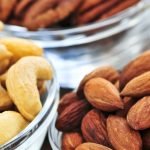Foods with a bitter flavor, such as broccoli rabe and kale, tend to elicit strong reactions. People don’t usually say, “Eh, they’re okay.” Instead, they either love them or hate them. And now, new research suggests these preferences may not be based on random tastes but on our genetic makeup.
The study, which was conducted by researchers at Penn State University in University Park, Pennsylvania, found that a dislike of bitter tasting food and alcohol may be due to a version of a specific taste receptor gene that heightens sensitivity to anything naturally bitter.1 Aubrey, Allison. “From Kale To Pale Ale, A Love Of Bitter May Be In Your Genes.” NPR. 1 October 2014. Accessed 9 October 2014. http://www.npr.org/blogs/thesalt/2014/10/01/352771618/from-kale-to-pale-ale-a-love-of-bitter-may-be-in-your-genes The subjects were 93 adults who assigned a rating to the bitterness and burn they experienced for three minutes after tasting an alcohol solution. DNA samples were acquired from each of them and tested for variations of certain taste receptors including TAS2R38, the gene shown in earlier studies to be responsible for a disinclination toward bitter that is estimated to occur in 25 percent of people. Those with the variation rated the bitter flavor and burning as stronger than their peers did.
This builds on a 2010 study one of the researchers took part in at the University of Connecticut in Storrs, in which a group of young adults participated in laboratory taste tests.2 Duffy, VB; et al. “Vegetable Intake in College-Aged Adults is Explained by Oral Sensory Phenotypes and TAS2R38 Genotype.” Chemosensory Perception. December 2010. Accessed 10 October 2014. http://www.ncbi.nlm.nih.gov/pubmed/21157576 After eating kale, asparagus, and Brussels sprouts, the scientists evaluated how sensitive each volunteer was to the bitterness. The volunteers also answered food-related surveys and maintained daily journals for one year to record everything they consumed. In addition, they were all tested to identify the presence of the TAS2R38 variant.
Those who had the altered version of the gene experience food differently, as the bitter elements in the food or alcohol bind more tightly to a taste receptor. The receptor signals the brain, which provides the eater with a greater sensation of bitterness. Conversely, those who have another variation of that gene end up at the opposite extreme of the taste spectrum. They have significantly less bonding with the bitter elements, resulting in a perception of much less bitter flavor. In fact, they often note a sweet flavor in some bitter foods. The remainder of us appear to have the standard version, in which we taste bitterness to some extent.
Perhaps these findings explain why the researchers discovered that the subjects who do not have extra sensitivity to bitterness ate a substantially larger quantity of vegetables over the year-long study at the University of Connecticut than did those who have a higher level of sensitivity. The results showed that the less sensitive participants consumed approximately 200 more servings of vegetables during the year compared to their more sensitive counterparts. And even worse, the scientists realized that this avoidance of veggies was not only affecting bitter produce. The volunteers with the gene variant tended to consume fewer of every type of vegetable across the board, instead of only shunning bitter options.
That’s pretty bad news for the segment of the population that has the gene variant, since vegetables offer so many nutrients, are full of fiber, and are naturally low in calories. A variety of veggies should be consumed by all of us every day. Yet the statistics, according to a report by the USDA earlier this year, show that as a whole we only eat an average of 1.5 cups of vegetables each day, as opposed to the recommended two to three cups.3 Guthrie, Joanne and Lin, Biing-Hwan. “Healthy Vegetables Undermined by the Company They Keep.” United States Department of Agriculture. 5 May 2014. Accessed 10 October 2014. http://www.ers.usda.gov/amber-waves/2014-may/healthy-vegetables-undermined-by-the-company-they-keep.aspx#.U33x-EIWWDz Plus, 51 percent of our vegetable intake was in the form of potatoes and tomatoes (hmmmm, French fries and pizza?), with only 10 percent consisting of dark green or orange veggies.
But if you are among those who do find bitter flavors unpalatable and would like to increase your vegetable consumption, there are ways to get around it. The most obvious, of course, is to stick with those vegetables that don’t have a bitter taste, such as squash, sweet peas, carrots, and sweet potatoes. But if you want to expand your horizons and attempt to eat more bitter produce, you may benefit from adding other flavors that can mask or reduce the strong flavor. Cook with a variety of spices, add a little natural salt, or roast them to promote their sweetness.
If no trick of preparation seems to make them more edible for you, don’t force yourself. There are other ways to get the positive effects of bitter compounds. In general, bitter herbs stimulate and support the liver and gallbladder. Milk thistle, dandelion, Oregon grape root, chicory, and Picrorhiza kurooa are five common medicinal bitter herbs used for their benefits to the liver and gall bladder, which is why you’ll find them in Jon Barron’s liver flush tincture. This formula is meant to be used as needed to help repair damage to the liver for better health overall. Just dilute it to the point where the bitter taste is acceptable.
References
| ↑1 | Aubrey, Allison. “From Kale To Pale Ale, A Love Of Bitter May Be In Your Genes.” NPR. 1 October 2014. Accessed 9 October 2014. http://www.npr.org/blogs/thesalt/2014/10/01/352771618/from-kale-to-pale-ale-a-love-of-bitter-may-be-in-your-genes |
|---|---|
| ↑2 | Duffy, VB; et al. “Vegetable Intake in College-Aged Adults is Explained by Oral Sensory Phenotypes and TAS2R38 Genotype.” Chemosensory Perception. December 2010. Accessed 10 October 2014. http://www.ncbi.nlm.nih.gov/pubmed/21157576 |
| ↑3 | Guthrie, Joanne and Lin, Biing-Hwan. “Healthy Vegetables Undermined by the Company They Keep.” United States Department of Agriculture. 5 May 2014. Accessed 10 October 2014. http://www.ers.usda.gov/amber-waves/2014-may/healthy-vegetables-undermined-by-the-company-they-keep.aspx#.U33x-EIWWDz |











